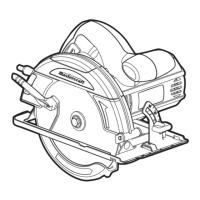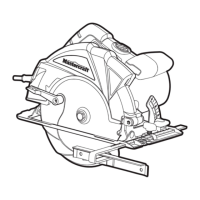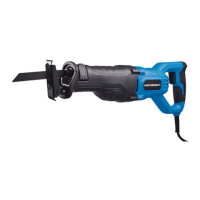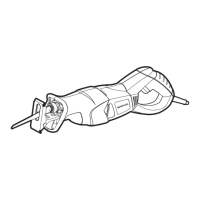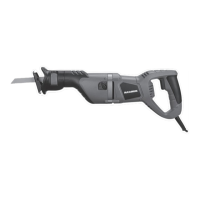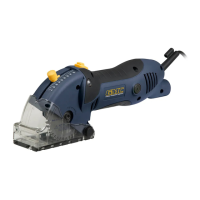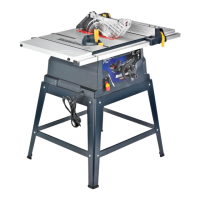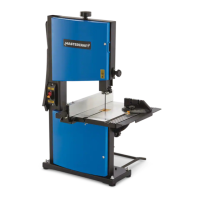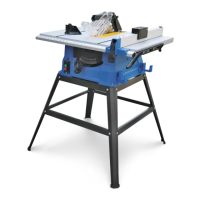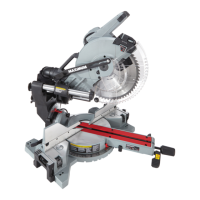headline bars
continuation tabs
notes
warnings
model no. 054-8363-0 | contact us 1.800.689.9928
23
22
INSTALLING AND USING THE EDGE
GUIDE
(fig 13)
Always use an edge guide when making long or wide rip
cuts with your saw. You can use either a straight edge or
use an edge guide.
1. Unplug the circular saw from the power supply.
2. Position the edge guide so that the arm with the ruler
side is facing up. Slide the arm of the edge guide
through the mounting slots at the front of the saw
base.
3. Adjust the edge guide to the desired width of cut.
4. Tighten the edge-guide locking knob.
5. When using an edge guide, position the face of the edge guide firmly against the edge of the workpiece.
This will help make a true cut without binding the blade. The edge of the workpiece must be straight for
the cut to be straight. Use caution to prevent the blade from binding in the cut.
MAKING CROSS CUTS AND RIP CUTS
(fig 14)
When making a cross cut or rip cut, align your line of cut
with the centre of the notch by the 0° indicator. Because
blade thicknesses vary, always make a trial cut in scrap
material along a guideline to determine how much, if any,
the guideline must be offset to produce an accurate cut.
MAKING RIP CUTS
(fig 15)
The combination blade provided with your saw is for both
cross cuts and rip cuts. Ripping is cutting lengthwise
along the grain of the wood.
When rip cutting a large sheet, use a straight edge
(available separately).
1. Secure the workpiece.
2. Use C-clamps (available separately) to clamp a
straight edge to the workpiece.
3. Carefully guide the saw along the straight edge to
achieve a straight rip cut.
NOTICE:
• The edge guide can be used on the left or right side of the blade (fig 13).
• Do not bind the blade in the cut. It could cause the saw to “kickback” towards you, which could result in
serious injury.
WARNING!
• Never connect the circular saw to the power source when you are assembling parts,
making adjustments, installing or removing cutting blade, cleaning, or when it is not in use.
Disconnecting the circular saw will prevent accidental starting, which could cause serious
personal injury.
• Always securely clamp and support the workpiece. Always maintain proper control of the
saw. Failure to clamp and support the workpiece and loss of control of the saw could result
in serious injury.
• If the blade comes in contact with the workpiece before it reaches full speed, it could
cause the saw to “kickback” towards you, which could result in serious injury.
WARNING!
• Do not bind the blade in the cut. It could cause the saw to “kickback” towards you, which
could result in serious injury.
• If the blade comes in contact with the workpiece before it reaches full speed, it could
cause the saw to “kickback” towards you, which could result in serious injury.
• Always support the workpiece and clamp it securely. Always maintain proper control of
saw. Failure to support and clamp the workpiece and loss of control of saw could result in
serious injury.
OPERATING INSTRUCTIONS
OPERATING INSTRUCTIONS
fig 13 fig 14
Line of cut
0° indicator
C-Clamp
Straight
Edge
Guideline
Workpiece
fig 15
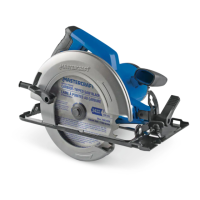
